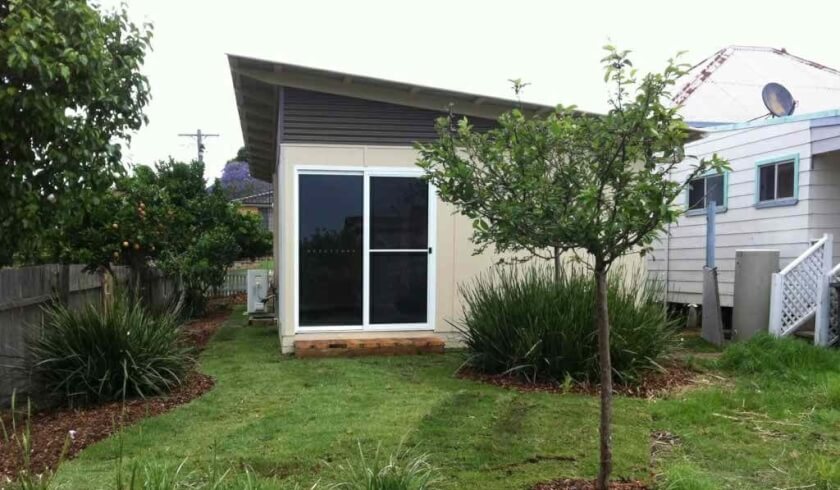Should you put a granny flat on an existing property?
Many property investors often look to improve the cash flow position of their portfolio by building granny flats on their existing properties, but—especially for new and budding investors—is this always a good strategy?

Brett, 23, has recently purchased his first two properties in Sydney, building a portfolio worth $1.75 million with a loan-to-value ratio of 85 per cent and a yield of 3.5 per cent. As a property investor who is fairly in the business of creating wealth through property, his strategy has initially been focused on growth instead of yield.
“[For my second property], I probably [should] have looked at something with a higher yield to complement my existing property and improve cash flow,” he said. “I'm at the point now where I would like to improve the cash flow position of my portfolio and I'm looking into alternatives—number one is a granny flat [and] number two … is expanding interstate, particularly Brisbane, where yields are much higher.”
According to Smart Property Investment’s Phil Tarrant, improving the yield on one’s portfolio takes good research and the right preparations.
He, together with buyer’s agent Paul Glossop, discusses the things to consider before building a granny flat on an existing property and why it all comes down to serviceability and time in the market:
What’s the best choice to fix a portfolio’s yield: put a granny flat on an existing property or buy an asset with a much higher yield to complement negative cash flow?
Paul Glossop: Ultimately, what I'd probably look at is that 85 per cent LVR [loan-to-value ratio]—that, for me, in this current lending market, is probably the question. I'd say if you haven't spoken to your broker and they haven't given you advice, that's the first discussion. Say, "What can I borrow, if anything?" because the rest of it will probably be irrelevant. If they say, "Look, unfortunately, if you want to build a granny flat or if you want to buy somewhere else, you're not going to either A, have the cash flow or B, get the money."
Unless you've got a cash deposit, then probably I'd have that discussion with your broker and figure out where you can stand.
Should Brett be able to get the money, what’s the next best step?
Paul Glossop: Let's say, hypothetically, you can muster up somewhere in the vicinity of $40,000 to $50,000, then I would say … that would be the amount of money you'd need to get a construction loan to build a granny flat… The money you're going to need for $100,000 or $130,000 granny flat is going to be around about $40,000-odd cash to get a 70 per cent LVR on a construction loan.
If that is the scenario, personally I'd say then, how does that money best work for you? What is your cash flow like now? Are you negative to the point where you're going backward? Are your assets going to go up in value over the next five years to allow you to extract equity to reinvest or do you need to focus wholly and solely on not buying anything anymore, switching your loans to maybe a PNI position over the next couple years to get a sharper rate and improve your LVR by paying down?
Do you think a property professional could play a big role in this circumstance?
Paul Glossop: [This is] a discussion … [you should have with] your broker, as well as, to a degree, your accountant buyer's agent… You want to get that broker to give you some advice on different things that you look at.
In general, are granny flats a good addition to a property portfolio?
Paul Glossop: Granny flats are great, for me, as long as the demand is there. There has to be demand and you want to make sure that [there's] not just demand in that local market but also demand long-term.
Secondly… capital growth has to be still, for me, the forethought of why you're doing this [is] because cash flow can be fixed, but a couple of grand a year is not going to make you any more wealthy over the long term, as opposed to potentially improving [the way that] asset will be [from] what it already sits as or getting another asset in a different growth market [that could] still provide you cash flow.
If I've got $40,000 … I [won’t look] at granny flats unless they are absolutely necessary — they're sort of the endgame because that's when you might want to reduce debt and go into more of a consolidation phase than a cash flow generating phase.
So, capital growth should be prioritised over cash flow?
Paul Glossop: I'd always chase capital growth to have a cash flow, but ideally, if you can get both, then that would be what I'd be doing.
What would be your final advice for Brett?
Phil Tarrant: If you've got plenty of ready cash to play with, go out there and chase growth. But [why] do we invest in property...? It creates wealth over time, right? There's no use investing in property for a good yield if your properties aren't going up… It's all going to come down to how much extra cash you have, every single month, to be able to cover any negativity in your portfolio.
[But] do you actually need to start thinking about yield yet? Because if you're in the accumulation phase and you're looking to build a portfolio, often, you're not going to be able to turn that into a positive portfolio very quickly because it takes time for your portfolio to mature.
Tune in to Paul Glossop’s Q&A episode on The Smart Property Investment Show to know more about the right program to keep track of your property without going into depreciation, how to decide where to buy and which investment property is right for you, and how to identify opportunities.
